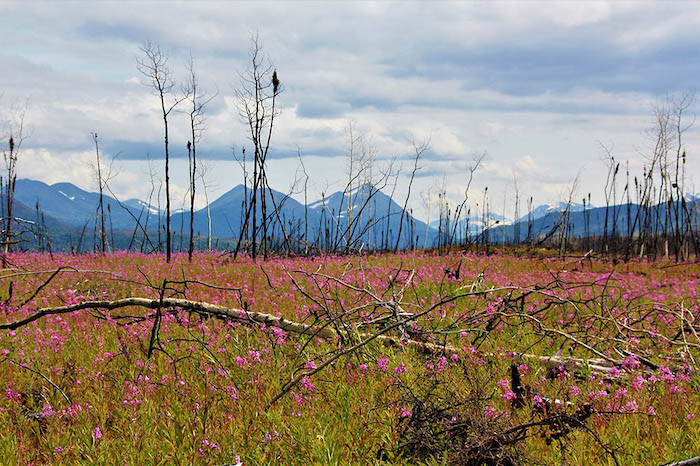Witnessing Climate Change Effects in Alaska
Alaska is at the forefront of climate change, and it’s up to us to protect it

Like many Americans, my family hoped for some normalcy after our COVID vaccinations. For us, that meant finally traveling to Alaska and taking in a small slice of the remarkable state. Yet in between the seeing humpback and killer whales, sea lions and Denali, it was hard for me to avoid the challenges climate change poses for people and wildlife across the planet. Shortly after we returned, the Intergovernmental Panel on Climate Change’s (IPCC’s) 6th report came out, adding some stark context to what we saw across Alaska.
Let’s take a moment to talk about that report. The IPCC reports collate the best available science on the state of the climate. For IPCC 6, the results confirm, in greater detail than ever before, the impact that fossil fuels have on our climate. The report also draws a sharper link between greenhouse gasses and extreme weather events that are becoming more common every year. As our own Sarah Cooley put it, “The IPCC’s new report confirms that human fingerprints are all over many of the changes we see today in our climate and across the globe.” If there’s one place we can see human fingerprints clearly, it’s Alaska.
For the past 50 years, Alaska has warmed at least twice the national rate. Nowhere is that clearer than at Glacier Bay National Park, where winters are at least five degrees Fahrenheit warmer. Most tourists visit Glacier Bay to witness the iconic tidewater glaciers—massive ice sheets hundreds of feet high that extend into the bay itself. In the 1980s, my parents saw Muir Glacier, but by 2021 the glacier has retreated so far that it no longer reaches the water. That’s a common story. Roughly 98% of the glaciers in the park are in full retreat. While some glacial movement is normal, the IPCC’s report confirms that glacial retreat since the 1990s is explicitly linked to climate change and increasing temperatures. The Grand Pacific Glacier, which once stretched to the end of the Bay and pushed the Tlingit peoples from their ancestral homes in the 18th century, is now at the opposite end of the park—nowhere near the water’s edge. What’s left behind is barren earth.

That’s bad news for much of Glacier Bay’s marine wildlife, like the sea otter. After being hunted to local extinction for their fur, sea otters were reintroduced to Southeast Alaska from California in the 1960s. Their reintroduction is a remarkable conservation success, so much so that more than one frustrated fisherman told me they are now a source of competition due to their ‘shellfish’ eating habits. Glacier Bay hosts the densest concentration of sea otters in the state. It’s a heartening recovery story that we saw firsthand on our trip as we spotted hundreds of these adorable marine mammals. But the otters also depend on cold water kelp forests, a habitat that’s disappearing across their entire range as the ocean warms. As a keystone species, sea otters help keep urchin populations in check, which allows kelp to grow and thrive. When otters’ habitat disappears, their ability to contain sea urchin populations decreases as well, setting off just one of many chain reactions across the entire ecosystem.
Other stops across the region offered their own warnings. In the Kenai Peninsula we stopped in the Kenai National Wildlife Refuge, site of the 2019 Swan Lake Fire. The fire burned down almost 12% of the wildlife refuge, or over 170,000 acres. That’s larger than the island of Manhattan and Washington D.C. combined. Swan Lake was sparked by a lightning strike, and while some wildfires are natural, the prime driver for intense wildfires is temperature. Anticipating the results of more frequent, more intense wildfires is the challenge ahead.

These are just a few examples from a brief trip to Alaska, but hopefully this illustrates some of the stark warnings the IPCC has issued. I had the rare privilege of visiting the state, but I do not live there. I do not face the challenges that indigenous communities from the Inuit of the North Slope to the Tlingit and Haida peoples of the Southeast grapple with every day. Climate change threatens food security, ancestral and archeological sites and could potentially force entire communities to relocate.
If I can leave you on a positive note, it’s that change is still possible. The IPCC report does indicate that we can limit warming to 1.5 Celsius, the aspirational target of the landmark Paris Agreement. Action on climate, from all sectors including shipping, must happen as fast as possible for us to reach that future. You can take action right now by telling the Biden administration to invest in green shipping and ports and reduce shipping emissions—it’s going to take all of us to ensure a healthy, sustainable Alaska.